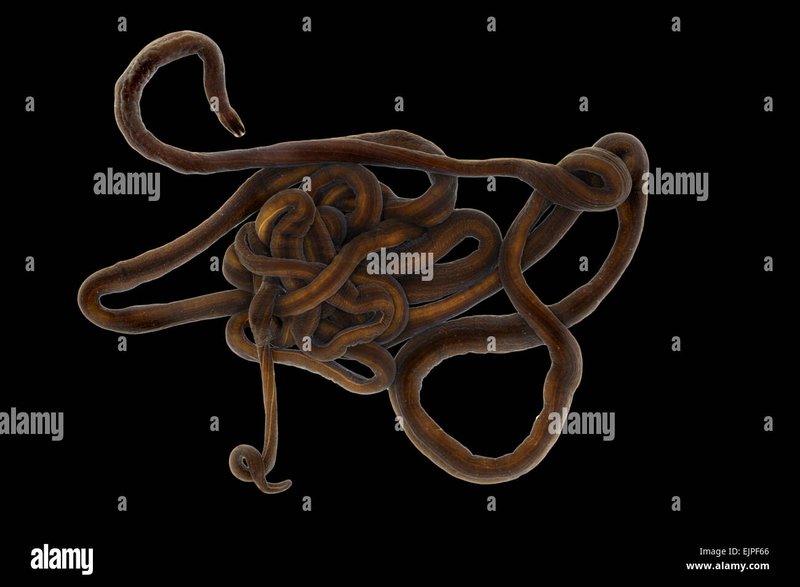
Understanding the role of this mucus can feel like diving deep into an underwater mystery. It’s not just goo for show; it plays a crucial part in survival tactics. So, let’s unravel the sticky secrets of bootlace worm mucus. What makes it so special, and how do these worms manage to thrive in their watery homes?
What is a Bootlace Worm?
Bootlace worms belong to a group of creatures called *Lineus*, and they are mainly found in the waters around Europe. Despite their daunting length, they’re pretty harmless to humans. They possess a soft, elongated body that can easily blend into their surroundings. Think of them as the stealthy ninjas of the ocean; their long bodies allow them to hide in seaweed and rocky crevices.
These worms are also fascinating because of their anatomy. They have no bones, and their bodies are made up mainly of soft tissues. When threatened, they can even break into pieces—a bit like a lizard losing its tail. This ability helps them escape predators. But let’s talk about their famous mucus, which is a game changer for their survival.
The Science Behind the Mucus
Bootlace worm mucus is produced by specialized cells in their skin. This mucus serves multiple purposes, acting as both a hunting tool and a defense mechanism. Imagine it as a Swiss Army knife! The mucus is incredibly sticky and can trap small fish and other prey. Once the worm secretes this gooey substance, it can ensnare its meals with ease, making feeding a lot more efficient.
But the mucus isn’t just for catching dinner. When threatened, bootlace worms can release a larger amount of this slippery substance to create a barrier between themselves and any predators. The mucus can make it hard for attackers to get a grip, allowing the worm to squirm away to safety. It’s nature’s way of giving them a fighting chance.
Uses of Mucus in Hunting
When it comes to hunting, bootlace worms are similar to skilled hunters using traps. The mucus acts like a net, ensnaring unsuspecting small fish and crustaceans. This sticky strategy helps them gather food without expending too much energy. Picture a fisherman casting a net; once it’s set, the fish have little chance of escape.
Bootlace worms can sense the movement of their prey through the water, much like a cat stalking its dinner. Once they detect a target, they quickly release their mucus to ensnare it. The prey becomes trapped, allowing the bootlace worm to enjoy a leisurely meal. It’s a smart, efficient way to survive in a world where every bite counts.
Defense Mechanisms: More Than Just Slime
The mucus used by bootlace worms for defense is a fascinating thing to consider. When threatened, these worms can produce a thick layer of mucus that makes them difficult to eat. Predators like fish or crabs might take one taste and realize that this slippery meal is not worth the effort. The mucus can also contain compounds that deter other creatures from even trying.
It’s similar to how some plants have defensive chemicals that make them taste bad. The bootlace worm’s mucus is like a built-in security system. Additionally, because they can eject mucus quickly, they create a slippery escape route that can confuse predators. It’s almost like a magician’s disappearing act—just when you think you’ve caught them, they’re gone!
Comparison to Other Marine Species
Many marine creatures have similar survival strategies involving mucus, but the bootlace worm stands out due to its unique application. For example, other worms, like earthworms, use mucus for movement—allowing them to glide through soil. In contrast, bootlace worms use their mucus primarily for hunting and defense, making it a more versatile tool.
Additionally, fish like catfish produce mucus for protection against infections, but they rely on scales for defense. The bootlace worm, on the other hand, relies solely on its mucus. This gives it a unique adaptation that has evolved alongside its environment, showcasing the incredible diversity in survival strategies among marine species.
Real-World Applications and Research
Interestingly, the properties of bootlace worm mucus have caught the attention of scientists and researchers. There’s a growing interest in exploring its potential applications in medicine and materials science. The sticky and protective qualities of the mucus might inspire new wound dressings or adhesives. Just imagine using something inspired by the ocean to help in medical treatments!
Research into these unique biochemical properties is still in the early stages, but the potential could be vast. Scientists are looking into how the mucus can be synthesized or replicated for various uses. It’s a reminder that nature often holds answers to problems we haven’t even imagined yet.
The *mucus of bootlace worms* is more than just a slimy substance; it’s a marvel of evolution that highlights how organisms adapt for survival. From aiding in hunting to acting as a defense mechanism, this mucus serves multiple roles that are crucial to the worm’s life in the ocean.
As we continue to study these fascinating creatures, it’s essential to appreciate the ingenuity found in nature. Who knows? The next time you see a bootlace worm, you might think of it as a true pioneer of survival—a clever user of its resources in a world that often feels chaotic. So, the next time you’re by the water, remember that there’s a whole world of secrets lurking beneath the surface, just waiting to be discovered.

